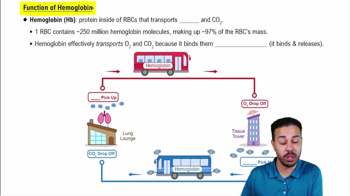The blood volume in an adult averages approximately:
a. 1 L
b. 3 L
c. 5 L
d. 7 L.
 Verified step by step guidance
Verified step by step guidance Verified video answer for a similar problem:
Verified video answer for a similar problem:



 6:11m
6:11mMaster Functions of Blood with a bite sized video explanation from Bruce Bryan
Start learning